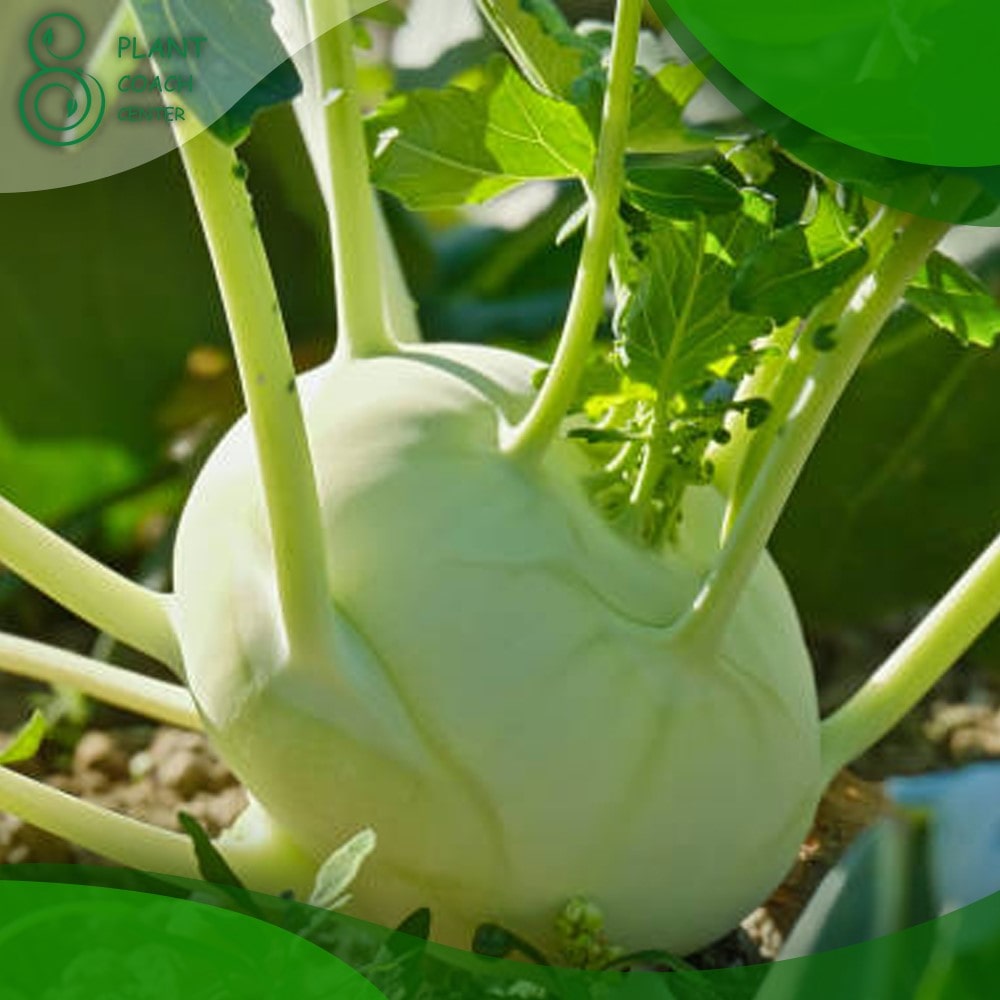Introduction to when to plant kohlrabi
Kohlrabi, with its unique shape and delicious flavor, is a versatile vegetable that deserves a place in every garden. Whether you’re a seasoned gardener or a beginner, understanding when to plant kohlrabi is essential for a successful harvest.
In this comprehensive guide, we will explore the various aspects of growing kohlrabi, from climate and soil requirements to planting techniques and caring for the plants. Get ready to embark on a journey of kohlrabi cultivation and discover the joys of homegrown goodness.
At PlantCoachCenter.com, we strive to provide valuable information and guidance to plant enthusiasts of all levels. In this article, we’ll cover everything you need to know about when to plant kohlrabi, ensuring that you have the knowledge to cultivate this delightful vegetable with confidence and success.
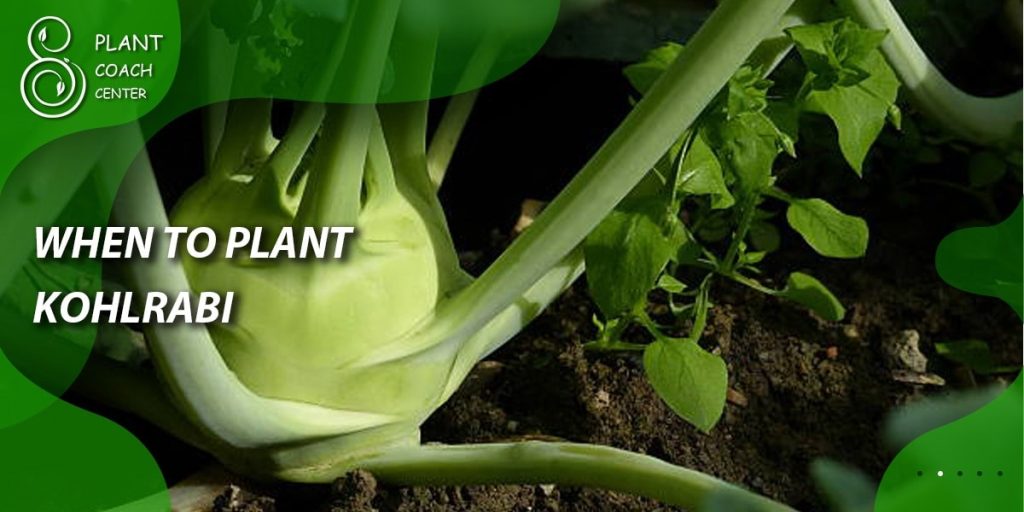
Understanding Kohlrabi Growth and Development
Before diving into the specifics of when to plant kohlrabi, it’s important to familiarize ourselves with the growth and development of this unique vegetable. Kohlrabi belongs to the Brassica family and shares similarities with cabbage, broccoli, and cauliflower. Here are the key points to understand:
– Life cycle and growth stages of kohlrabi plants: Kohlrabi has a relatively short life cycle, typically ranging from 45 to 60 days. It goes through several stages, including seed germination, seedling growth, bulb formation, and eventual harvest.
– Factors influencing growth and development: Successful kohlrabi cultivation depends on various factors, such as temperature, sunlight, moisture, and soil nutrition. Understanding these influences will help you create optimal growing conditions for your plants.
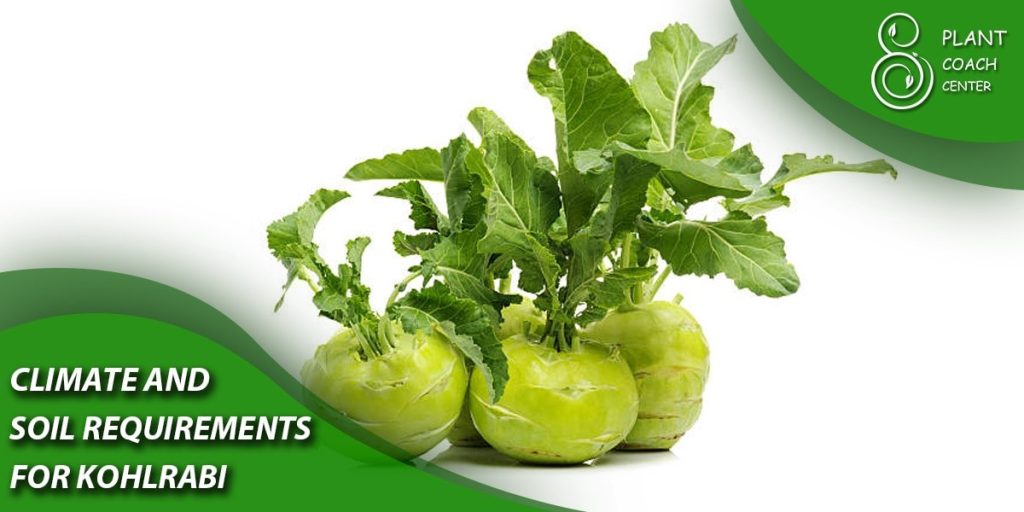
Climate and Soil Requirements for Kohlrabi
Kohlrabi thrives in cool weather conditions, making it an ideal crop for spring and fall. Understanding the climate requirements is crucial for determining the appropriate planting time. Here’s what you need to know:
– Ideal climate conditions for planting kohlrabi: Kohlrabi prefers temperatures between 40°F (4°C) and 75°F (24°C). It can tolerate light frost but may bolt prematurely in hot weather.
– Soil preferences and preparation techniques: Kohlrabi thrives in well-draining, fertile soil with a pH range of 6.0 to 7.5. Preparing the soil by removing weeds, loosening it, and incorporating organic matter will create the ideal environment for your kohlrabi plants to flourish.
Selecting the Right Kohlrabi Varieties
Kohlrabi comes in various varieties, each with its unique characteristics and growing requirements. Choosing the right variety is essential for a successful harvest. Consider the following factors when selecting your kohlrabi variety:
– Overview of different kohlrabi varieties: Kohlrabi varieties can differ in size, color, taste, and maturation time. Some popular varieties include Early White Vienna, Purple Vienna, and Gigante.
– Choosing the appropriate variety based on preferences and growing conditions: Consider factors such as available space, desired taste, and the length of your growing season to select the variety that best suits your needs.
Preparing for Kohlrabi Planting
Proper preparation before planting sets the stage for healthy and productive kohlrabi plants. Taking the time to prepare the soil and create optimal planting conditions will greatly benefit your crop. Here’s what you should focus on:
– Timing considerations for planting kohlrabi: Kohlrabi can be grown in both spring and fall. The timing will depend on your specific location and the average last frost date in your area. Aim to plant kohlrabi early enough to allow sufficient time for growth before extreme temperatures or frost.
– Preparing the soil and creating optimal planting conditions: Start by removing any weeds or debris from the planting area. Loosen the soil using a garden fork or tiller to improve drainage and root penetration. Incorporate organic matter, such as compost or well-rotted manure, to enrich the soil with nutrients.

Direct Sowing vs. Transplanting Kohlrabi
Kohlrabi can be grown from seeds or transplants, giving you flexibility in choosing the right method for your circumstances. Consider the advantages and disadvantages of direct sowing and transplanting to make an informed decision:
– Pros and cons of direct sowing kohlrabi seeds: Direct sowing involves planting seeds directly into the garden. This method is simple and suitable for smaller gardens. However, it may require more time for the plants to reach maturity.
– Transplanting techniques for starting kohlrabi indoors: Transplanting involves starting kohlrabi seeds indoors and later transplanting the young seedlings into the garden. This method allows for earlier planting and potentially faster maturity. However, it requires additional care and resources to establish and maintain the seedlings.
Best Practices for Planting Kohlrabi Seeds
Planting kohlrabi seeds properly is crucial for successful germination and healthy seedling development. Follow these best practices to ensure optimal conditions for your kohlrabi seeds:
– Seed selection and quality considerations: Choose high-quality kohlrabi seeds from reputable sources. Check the seed packet for the recommended planting depth and spacing.
– Step-by-step guide to planting kohlrabi seeds:
- Prepare furrows or individual holes in the garden bed following the recommended spacing guidelines.
- Sow the kohlrabi seeds at the appropriate depth, typically around ¼ to ½ inch deep.
- Cover the seeds with soil, gently firming the surface.
- Water the planted area thoroughly but gently, ensuring the soil remains consistently moist until germination occurs.
Caring for Kohlrabi Seedlings
Once the kohlrabi seeds germinate and the seedlings emerge, proper care is essential to ensure their healthy growth and development. Pay attention to the following aspects:
– Watering and irrigation techniques for seedlings: Kohlrabi seedlings require consistent moisture to establish a strong root system. Water them regularly, keeping the soil evenly moist but not waterlogged. Monitor the soil moisture levels and adjust watering accordingly.
– Providing adequate nutrition and fertilization: Kohlrabi plants benefit from regular fertilization. Apply a balanced fertilizer or organic amendments according to the package instructions. Side-dress the plants with nitrogen-rich fertilizer during their growth to encourage leafy development.
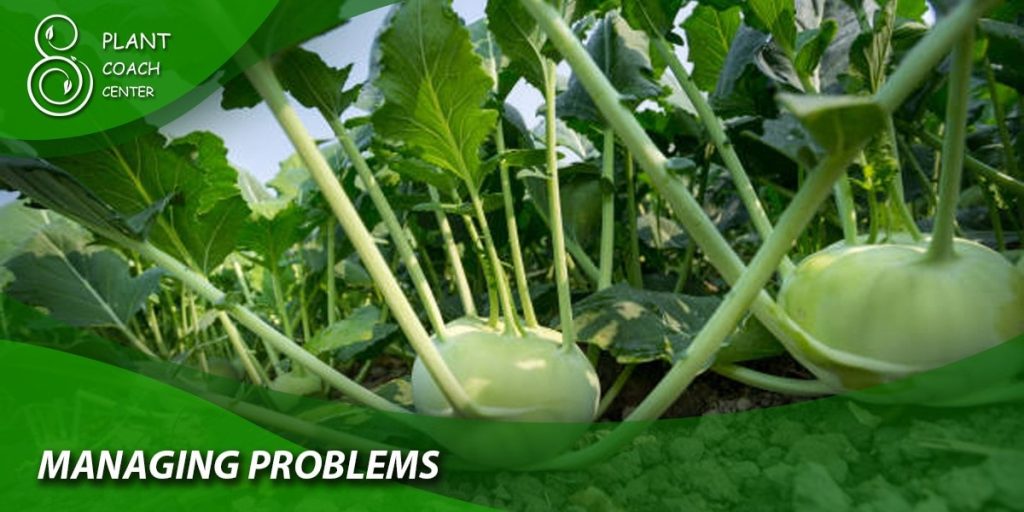
Managing Common Kohlrabi Plant Problems
While growing kohlrabi can be a rewarding experience, it is not without its challenges. Various pests, diseases, and nutrient deficiencies can affect kohlrabi plants. Here’s how to identify and address common issues:
– Identifying and addressing pests and diseases: Keep a close eye on your kohlrabi plants for signs of pests such as cabbage worms, aphids, and flea beetles. Employ organic pest control methods like handpicking, introducing beneficial insects, or using insecticidal soaps. Monitor for diseases like clubroot, powdery mildew, or black rot, and take appropriate measures such as crop rotation, proper sanitation, or organic fungicides.
– Preventing and managing nutrient deficiencies: Nutrient deficiencies can manifest as stunted growth, yellowing of leaves, or poor bulb development. Conduct a soil test to identify any deficiencies and amend the soil accordingly. Organic fertilizers or foliar sprays can help address specific nutrient deficiencies and promote healthy plant growth.
Monitoring Kohlrabi Growth and Development
Regular monitoring of your kohlrabi plants allows you to track their progress and make informed decisions regarding care and harvest. Keep an eye on the following aspects:
– Tracking growth milestones and progress: Observe the growth of your kohlrabi plants, from the development of true leaves to the formation of the bulbous stem. Take note of any abnormalities or signs of stress, and adjust your care practices accordingly.
– Recognizing signs of readiness for harvest: Kohlrabi bulbs are typically harvested when they reach a diameter of 2-3 inches. The bulbs should be firm and crisp. Monitor the size and texture of the bulbs to determine the optimal harvest time. Harvesting too late may result in woody or pithy bulbs.
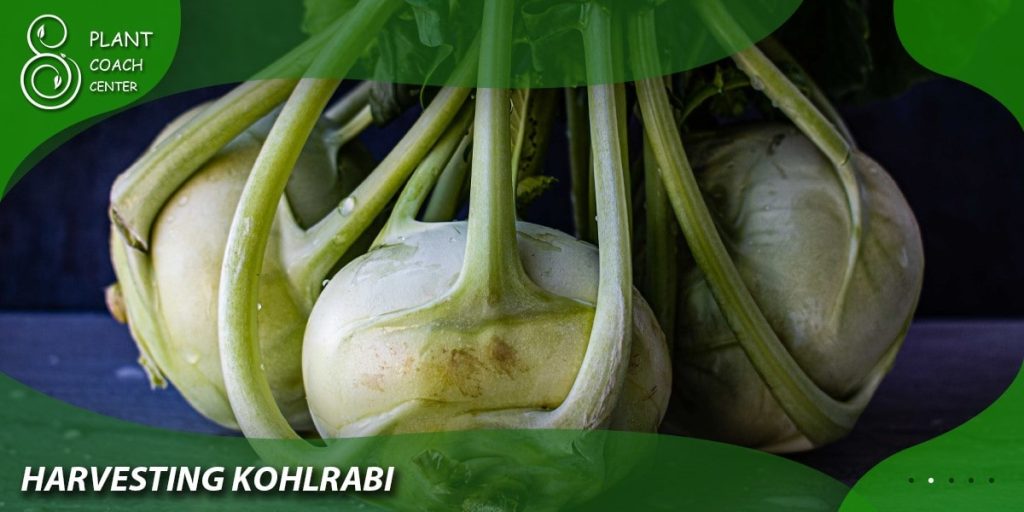
Harvesting Kohlrabi
Harvesting kohlrabi at the right time ensures the best flavor and texture. Follow these guidelines for a successful harvest:
– Determining the optimal harvest time: Harvest kohlrabi when the bulbs reach their desired size, usually around 2-3 inches in diameter. Larger bulbs may become tough and fibrous.
– Harvesting techniques and tips for best results: Use a sharp knife or garden shears to cut the kohlrabi stems just above ground level. Remove any leaves attached to the stem, leaving only a small stub. Handle the harvested kohlrabi with care to avoid bruising or damage.
Kohlrabi Planting Calendar and Seasonal Considerations
Timing is crucial when it comes to planting kohlrabi. To help you plan your kohlrabi cultivation, consider the following seasonal factors:
– Planting timelines for different regions and climates: The ideal planting time varies depending on your location and climate. Consult local gardening resources or extension offices for specific planting guidelines in your area.
– Adjusting planting schedules based on seasonal variations: Adapt your planting schedule based on seasonal fluctuations, such as early spring or late summer plantings. Consider using row covers or other protective measures to extend the growing season.
Extending the Kohlrabi Growing Season
If you wish to enjoy a continuous supply of kohlrabi, employing strategies to extend the growing season can be beneficial. Experiment with the following techniques:
– Succession planting: Stagger your kohlrabi plantings at regular intervals to ensure a continuous harvest throughout the growing season. Plant new seeds or transplants every few weeks to maintain a steady supply of fresh kohlrabi.
– Crop rotation techniques: Rotate your kohlrabi plants with other crops in the Brassica family or unrelated plant families to reduce the risk of pests and diseases. This practice helps maintain soil fertility and overall plant health.
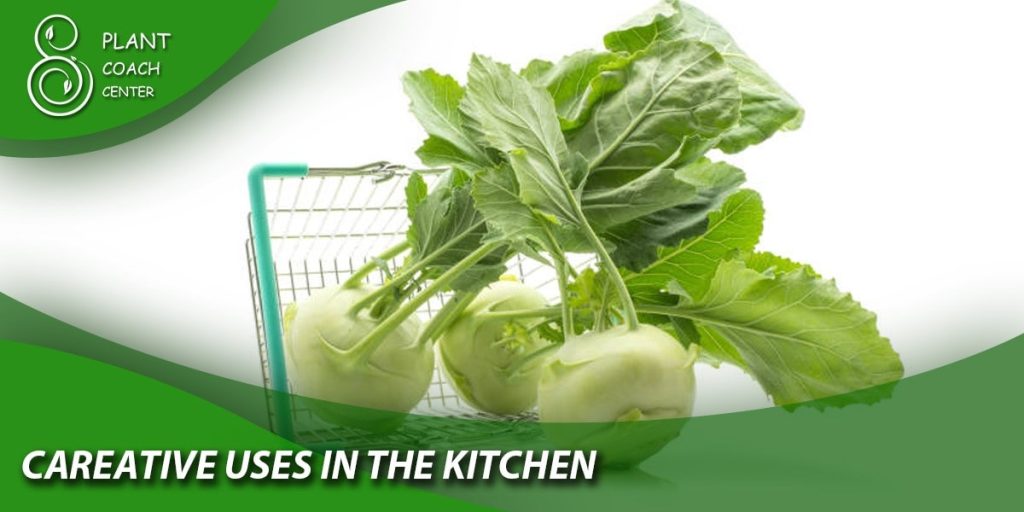
Creative Uses for Kohlrabi in the Kitchen
Kohlrabi’s versatility extends beyond the garden. Its mild, slightly sweet flavor makes it a delightful addition to various culinary creations. Here are some ideas to explore:
– Exploring culinary possibilities with kohlrabi: Kohlrabi can be enjoyed raw in salads, slaws, or as a crunchy snack. It can also be cooked in stir-fries, roasted, steamed, or used in soups and stews. Experiment with different recipes and cooking techniques to discover your favorite way to savor kohlrabi’s unique taste.
At PlantCoachCenter.com, we are passionate about providing comprehensive resources and guidance for plant enthusiasts. We hope this article has equipped you with the knowledge and confidence to plant kohlrabi successfully. Remember, the journey of growing kohlrabi is not only rewarding but also offers the pleasure of homegrown goodness on your plate. Happy planting and bon appétit!
conclusion
growing kohlrabi is a delightful and rewarding experience that can provide you with a continuous supply of this versatile vegetable throughout the year. By understanding the climate and soil requirements, selecting the right varieties, and following proper planting and care techniques, you can cultivate healthy and flavorful kohlrabi plants in your garden.
Whether you choose to direct sow seeds or start with transplants, ensuring optimal conditions for germination and seedling growth is crucial. Regular monitoring of your plants, addressing pests and diseases promptly, and providing adequate nutrition will contribute to their healthy development.
Harvesting kohlrabi at the right time, when the bulbs are firm and crisp, will ensure the best flavor and texture. By employing techniques such as succession planting and crop rotation, you can extend the growing season and enjoy a continuous supply of kohlrabi.
When should I plant kohlrabi?
Spring or fall.
Can kohlrabi be planted in summer?
Yes, but it prefers cooler temperatures.
How long does kohlrabi take to mature?
Approximately 55-60 days.
Can kohlrabi tolerate frost?
Yes, it can tolerate light frost.


